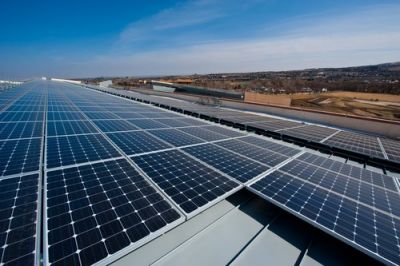US Foods uses the sun for more than produce
 Food giant US Foods, which has locations across the US, has just signed a deal to put solar on another of its facilities. This time at it's Albuquerque, N.M., distribution center. The company already has solar on four of its warehouses across the country with more to come.
Food giant US Foods, which has locations across the US, has just signed a deal to put solar on another of its facilities. This time at it's Albuquerque, N.M., distribution center. The company already has solar on four of its warehouses across the country with more to come.
The most recent agreement is for a 430 kilowatt PV rooftop array at the Albuquerque facility. The system will be designed to save the company money as compared to what it’s currently paying under its contract with its utility.
The project is being installed by Distributed Sun LLC (D-SUN) under a 20-year solar lease and will be owned and maintained by Distributed Sun’s Solar Energy Investment Company (SEIC), sunTHREE subsidiary, according to the company.
It’s not the first installation for US Foods. Earlier in 2012, the company announced that its Metro New York Division’s was installing enough solar to power 85 percent of its energy needs. “They’re finalizing installing the panels,” now, said US Foods spokesperson Lisa Lecas. The modules are being installed at its Perth-Amboy, N.J. warehouse. When completed the project is expected to reduce the company’s electric costs by 20 percent at the facility. The company also recently installed solar at distribution centers in La Mirada, Calif., Phoenix and San Francisco.
The installations are part of an effort at US Foods to increase its sustainability, according to Lecas. “All of our facilities have undergone sustainability improvements,” she said. Such retrofits have included installing more efficient lighting, efforts to reduce water use and more. The company has also implemented other strategies like reducing idle times and making delivery routes more efficient. As a result it’s improved vehicle fleet efficiency by 5 percent and increased energy efficiency at distribution centers by 15 percent. The efforts have helped the company save more than $22 million in energy and fuel costs.
The company also completed its first LEED certified building in Buda, Texas, last year, Lecas said. That building is 60 percent more efficient than it’s predecessor while more than twice as large.
Moving forward the company is likely to stay on track with sustainability. “We have plans to consistently reevaluate our facilities to make sure they’re sustainable,” Lecas said. “We do have plans this year to install solar at several facilities,” she added.



